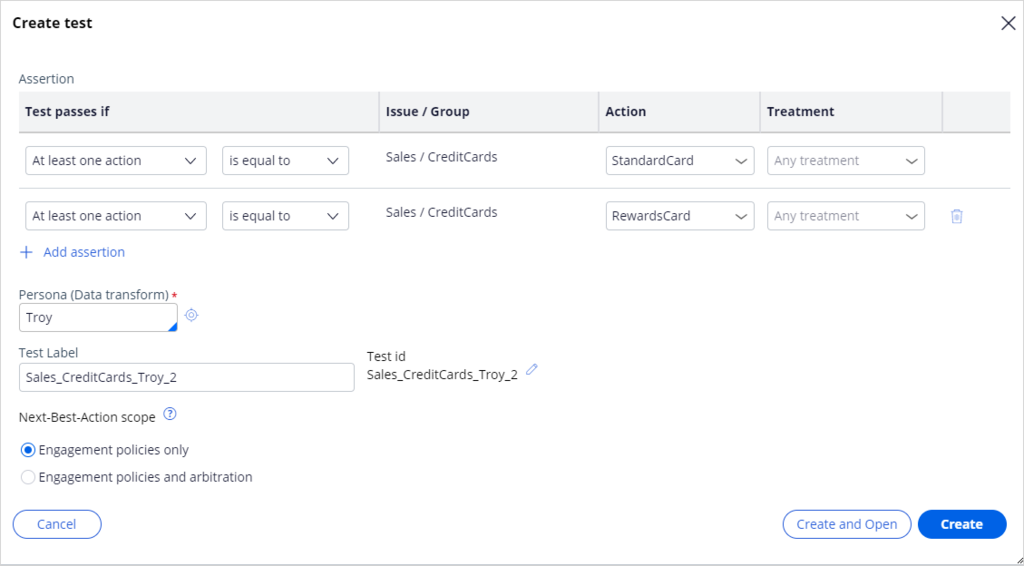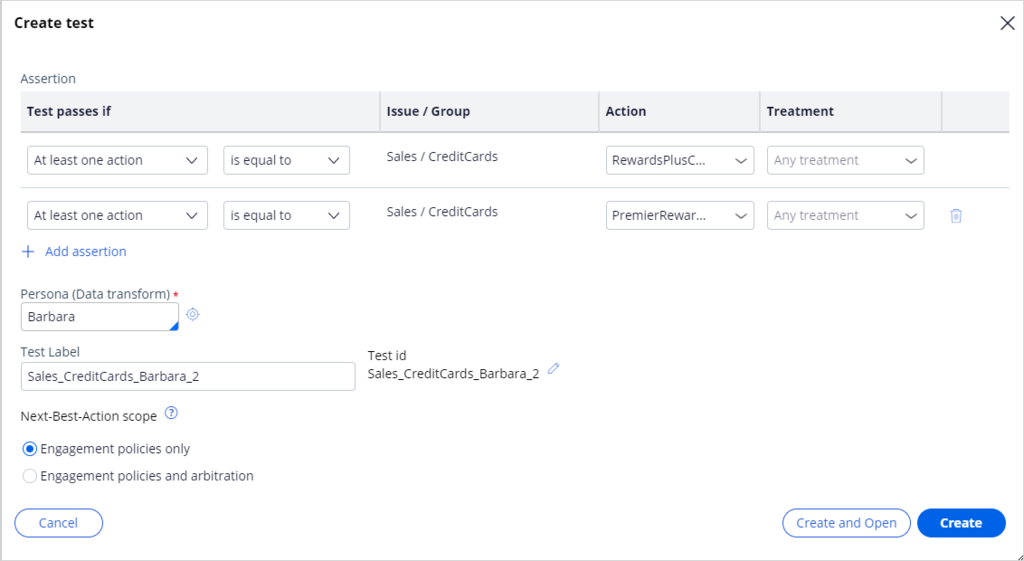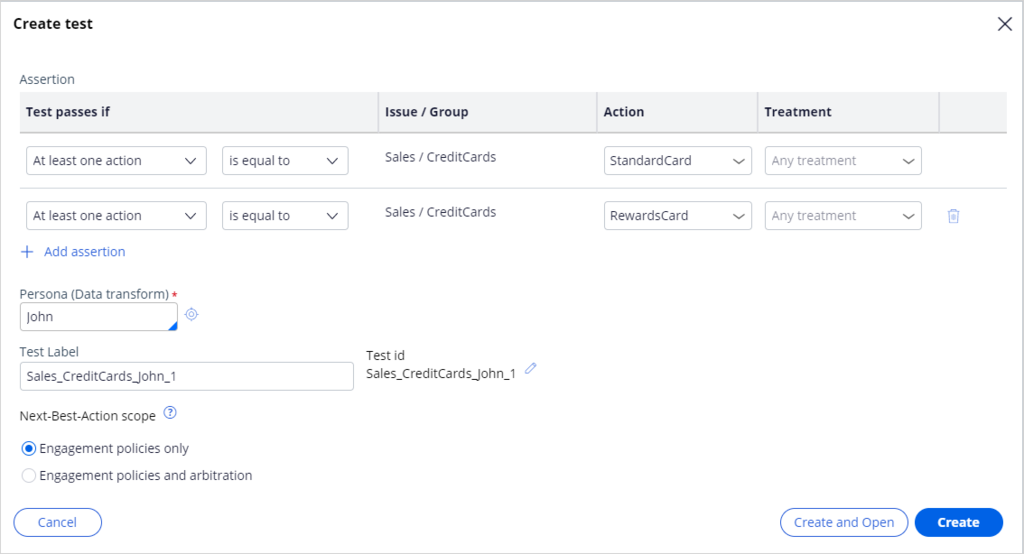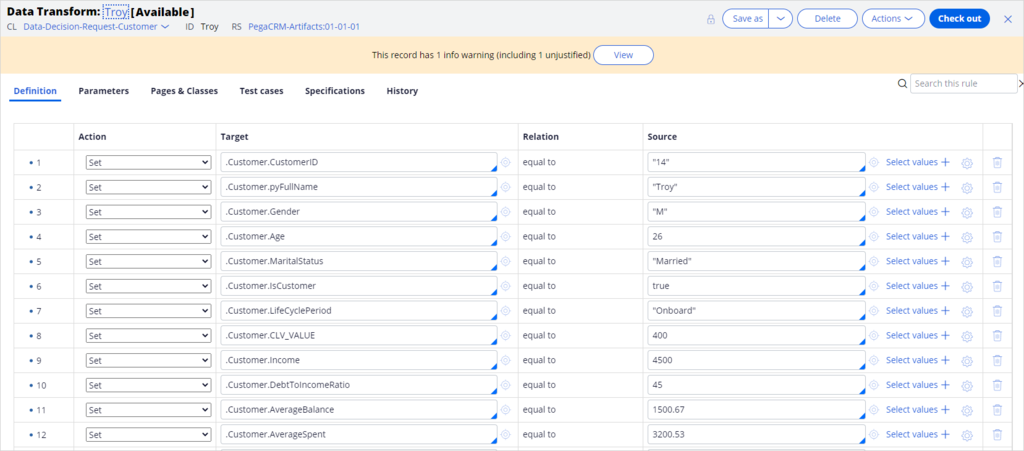
Testing next-best-action configuration with persona testing
Introduction
You can design persona-based tests to verify that the Next-Best-Action Strategy gives the expected results. You can design these personas according to your requirements and the strategy that you are testing to ensure you do not introduce any regressions as you define your engagement policies and arbitration.
Video
Transcript
This demo will show you how a persona test is conducted on customer personas to evaluate the next-best-action strategy results.
U+, a retail bank, wants to verify that customers are receiving the correct offers. In other words, the bank wants to ensure that the strategy is sending offers to customers in line with their business requirements.
Personas are a representation of various customer profiles that you use to test the results of the next-best-action strategy framework. Persona-based tests use customer personas with specific characteristics to evaluate next-best-action strategy results.
The bank decides to use Troy, Barbara, and John as personas to test the configurations. Troy is a 25-year-old chef who became a customer of U+ bank 3 months ago, and his credit score is 600. Barbara is a 40-year-old engineer who became a customer of U+ bank a month ago, and her credit score is 800. John is a 45-year-old IT employee who became a customer of U+ bank 15 days ago, and his credit score is 600.
Persona-based tests are used to verify that the next-best-action strategy gives the expected results. On the Next-Best-Action Designer Engagement Policy tab, you can create test cases for any group.
You can create test cases for a specific group, or for all groups. Running test cases for all groups implies that you are running the next-best-action strategy for all issues and groups in your business structure. In this case, as the bank wants to target the credit cards group, let's create a persona test case at the group level.
To configure a persona test case, select the action and treatment that you expect the test persona to receive according to your next-best-action strategy. In this case, Troy is supposed to receive the Standard card and Rewards card actions.
In the Persona (Data transform) field, select the persona against which you want to test the strategy. Select Troy.
In the next-best-action scope section, select whether the test should only check engagement policy configuration, or include additional elements such as constraints and arbitration.
Selecting “Engagement policies only” will validate that your policy conditions are providing the desired results. This will ensure that eligibility, applicability and suitability are tested.
Selecting "Engagement policies and arbitration" will validate the effectiveness of your policies when arbitrating across all actions. The test will consider arbitration, adaptive analytics, treatment and channel processing, and constraints.
In this case, select "Engagement policies only".
Once configured, select the test and click the Run selected tests icon.
Barbara is a persona who is eligible for the Rewards plus card and the Premier rewards card. Let's create a test case for this persona.
John is a persona who is eligible for the Standard card and the Rewards card. Let's create a test case for this persona.
Run the test to confirm he passes the test.
The bank has now decided to offer the Standard card to customers who have an average balance greater than $2000.
So, let's see how this engagement policy change affects these test results. To define an engagement policy, click Standard card.
Define an Applicability condition so that only customers who have a minimum average balance of $2000 qualify for the actions.
Run all the tests to see how this engagement policy configuration affects the test cases.
Observe that Troy fails the test. This means he does not satisfy all the existing engagement policies. Analyze the results to see why the test did not give the expected outcome.
Per the report, he is not eligible for the Standard card and, thus, this test failed.
Troy’s average balance is 1500, which is less than the defined applicability condition. Whereas, John’s average balance is 3000 and Barbara's average balance is 3500, which are more than the defined applicability condition.
The Troy persona failed the test, but John and Barbara passed it.
Let's edit the test for Troy's persona to delete the Standard card assertion and run the test
So, you can design all these personas according to the business requirements and test them every time an engagement policy has changed.
You can also export the results into an excel sheet for further analysis.
This demo has concluded. What did it show you?
- How to create persona test cases.
- How engagement policy changes affect the persona test results.
- How to edit persona test cases.
This Topic is available in the following Module:
If you are having problems with your training, please review the Pega Academy Support FAQs.
Want to help us improve this content?









